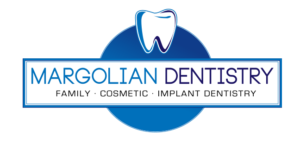How does caring for your teeth change as you age?
The fundamentals of oral care are the same, brushing daily and flossing, however there are new challenges to overcome. As we age the supporting gum and bone structures for our teeth can resorb and leave more of the teeth roots exposed. This is how the expression “long in the tooth” came about. The roots of teeth are not protected with strong enamel and instead are covered in a substance called cementum which is significantly weaker and much more porous. This porosity leaves the roots more susceptible to sensitivity from cold and sweets as the nerves are closer to the surface, but also leaves it much more vulnerable to cavities.
How can we combat this?
Regular professional teeth cleanings are essential to prevent these root cavities because as the gum and bone pull away from the teeth it creates areas of plaque and tartar retention that are much more difficult to access and clean with brushing and flossing alone. Home care is still very important but with these age related changes and with decreased manual dexterity often found in older individuals, in office hygiene care is even more essential.
How do the medical conditions in seniors factor in?
The other most significant change in older individuals is the decrease in salivary flow meaning dry mouth. This is a natural occurrence with aging but it is also worsened by the medications prescribed to seniors for their medical conditions, because the majority of them have a side effect of causing dry mouth. Often these individuals are taking multiple medications and this can leave the mouth extremely dry and as a result much more prone to cavities. So now you have an oral environment with decreased saliva to wash away the plaque and to bring in the cavity fighting agents, combined with exposed softer teeth roots. Now this isn’t to say people should go off these prescribed medicines because they wouldn’t be on them unless they were necessary. There are though things one can do to increase their saliva flow or replace it completely. The Biotene line of products makes great options for combatting dry mouth including toothpastes, mouthwashes, and sprays.
How is it sometimes that people have these cavities but don’t know they have them and have no pain?
With age the nerve inside the tooth insulates itself and shrinks in size. This can make the teeth feel less sensation. It can also mean that cavities can go undetected by a patient until noticed by the dentist. That’s why it’s important to have regular check ups to catch these cavities before they become too large.
What are some options for replacing missing teeth?
There are a variety of options for replacing teeth some are removable appliances like partial and complete dentures and some are permanent like bridges and implants.
Most of us know about the standard complete dentures we take in and out to replace a full set of teeth. The issue with these is without teeth in our mouth our gum and bone shrink in size and these dentures continually get looser and looser. Then you find yourself loading up on the denture adhesives.
The new gold standard for dentures is something called implant retained dentures or implant retained bridges. Implants are artificial roots placed in the mouth, which will act as a support for either a new single tooth, a group of teeth or a full new set of teeth. We can use these implants to turn a loose fitting denture into what we call a “snap in denture” where the denture literally snaps onto the implants in the mouth keeping it secure and eliminating any rocking or moving of the denture in the mouth. The other option is what we call an “implant bridge” where a fixed permanent new set of teeth is placed on top of the implants and is never removed. It’s the closest thing to a new set of teeth, is permanently retained in your mouth, and it looks and feels very natural.

